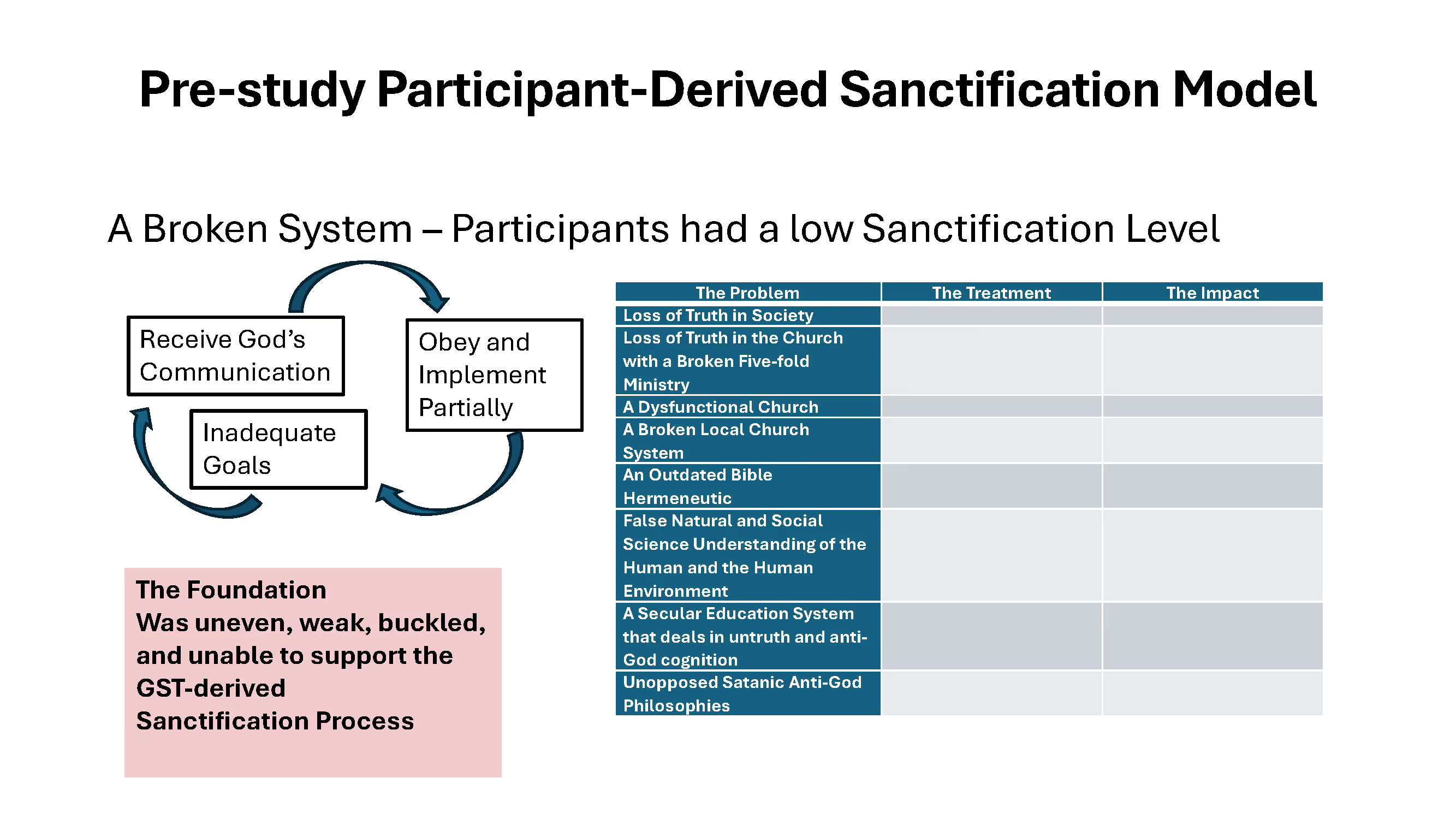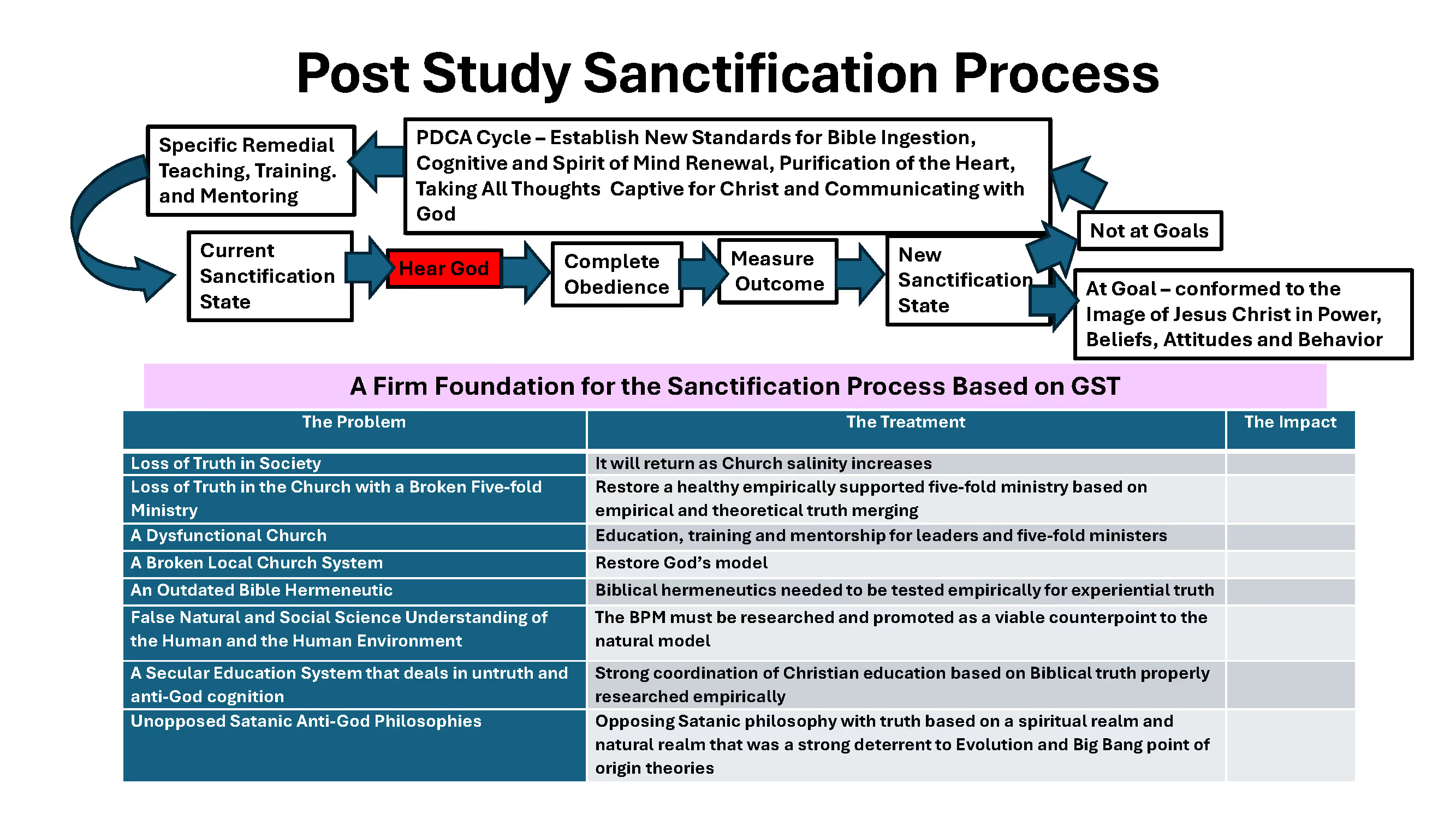The members of the Lord’s Body need to understand science from God’s perspective. It is critical to our understanding of God’s character, and thus to our presentation of him to our contacts, especially people educated in the sciences. For this reason, Lititz Institute wants to encourage members of the Lord’s body to undertake research in the sciences. Bruce Williams, co-founder of Lititz Institute with his wife Alta Ada Williams, completed and defended his doctoral dissertation in the Psychology research track in early 2025 at Liberty University.
In the Findings section of the dissertation, the reader will find a section on Investigator Insights, which explains how he observed God working with him to bring about God's intended message. We must remember that God created all the disciplines in the natural and social sciences for his eternal purposes. God made it very clear to Bruce that he was to place the content of the book, ‘How to be Led by the Spirit of God: Maturing in the Spirit’ into an academic peer-reviewed format. This is the key; the Spirit of God must lead one to serve God in the sciences, and during their walk in the sciences.
In the dissertation, the Biblical Psychology Model (BPM) is put forward as an alternative to the default secular model to explain human behavior as we live and function in both the natural and spiritual realms. The BPM is the foundation for the teaching and ongoing research of the Lititz Institute. BPM was initially revealed through an intensive ten-year study of the Bible, based on Watchman Nee’s foundation in The Spiritual Man. The study for the dissertation revealed supportive evidence for BPM in an observational approach (empirical methodology) of how God works with His people to bring about sanctification.

Lititz Institute will hold discussion groups for those interested in working with God in empirical methods in the sciences. If anyone has any suggestions, requests, or experiences in the work of God in the sciences, please get in touch with us. Below are links to the Dissertation, the diagram of God’s sanctification processes, and an outline sketch of the fundamentals of the Biblical Psychology Model (BPM) presented in the dissertation.
Links to the Doctoral Dissertation
https://digitalcommons.liberty.edu/doctoral/6519/
For Proquest
https://www.proquest.com/docview/3186855280
The diagrams in the dissertation distill the Grounded Theory of how God manages His process of sanctification.


The Major Components of the Biblical Psychology Model
Two realms: There are two realms humans live in concurrently: the spiritual and the natural realms. Those two realms have diverse governance, laws of physics, laws of material substances, and three distinct types of beings living within both as individuals. The substances were the composition materials. The spiritual realm controls interactions between the two realms. Time is different for each. God told us in Genesis 1 that He created time. Suppose one reflects on what God has revealed in His Bible. In that case, they will see that the human concept of time is related to our inability to process much material at any instant cognitively. God could envisage entire creation scenarios down to the hairs on the heads of all people in a moment. He, therefore, created time to accommodate our feebleness. Time is not a universal constant despite the assumptions of modern physics.
Two: Humans are two individuals in one flesh. These are the spirit, the inner person (King James Version, 1611/1900, Ephesians 3:16; 1 Peter 3:4), and the outer person of flesh. They occupy the same natural realm space without compromising the spirit or the flesh. The spirit and the flesh are always antithetical opposites in attitudes, beliefs, and behaviors before the second birth. The spirit is the inner person of God and from God (King James Version, 1611/1900, Galatians 5:16-18, 6:7-8).
Two psychology models: Biblical and Secular
Two births: potentially. The first is into the natural realm. The second, if experienced, is into the spiritual realm.
Two spirits: before and after the second birth. At the second birth, God gives the recipient a new spirit.
Two times with significant implications in many ways. Time is a natural realm construct made by God to allow people to navigate complexity in appropriately sized perceptual “bites.” His cognitive power is infinitely greater than human cognitive power.
Two sets of six senses for each realm. The six spiritual senses allow a person to interact with the spiritual realm. Many people’s spiritual senses are atrophied or damaged. Their information was also often attributed to a natural realm agency.
Two sets of illness/pathology, one set for the spirit and one set for the flesh. There are differential symptoms that allow a diagnosis in some situations. Often, both the flesh and the spirit share common maladies.
Two: There are expected growths after a natural and spiritual birth. Natural growth is coordinated development with increasing physical, intellectual, emotional, and social skills. Work skills increased in parallel with that coordinated development. The kind of work an individual could perform successfully depended on the overall development of physical, intellectual, emotional, and social skills. Usually, the greater the skills, the more desirable the person is to employers. It is no different in the spiritual realm. There is spiritual power to perform spiritual realm work, and there are coordinated emotions, cognition, and social skills in spiritual real munderstanding and interactions. The spiritual realm growth has approximately 14 growth stages of kingdom work authority. After the second birth, there is an analogous ordered and coordinated growth available if a person takes in spiritual food. That spiritual growth depended on getting adequate spiritual nutrition and keeping a healthy spirit (King James Version, 1611/1900, 2 Corinthians 7:1). Hebrews 5:11-14 (King James Version, 1611/1900) show that after the second birth, a person was older in the natural realm, but a spiritual baby. Romans 8:14 (King James Version,1611/1900) talked about young adults. Just as we measure natural growth using well-baby checks and subsequent growth by achievement tests, we can do that with the approximately 14 stages of spiritual growth (Williams & Williams, 2020). In contradistinction to the subjective secular spirituality tests, the Biblical Spiritual Maturity Scale (BSMS) (discussed in the dissertation) identified achievements and growth stages. Histograms showed that there was an overlap between the Hodge (2003) Intrinsic Spirituality Scale (ISS) and the BSMS (Appendix B). However, the ISS and BSMS measured different psychological constructs.
Two: There are two sets of spiritual nutrients. The Bible, theword of God, was milk (King James Version, 1611/1900, Hebrews 5:11-14). Communicating with God provides a source of immense spiritual energy. Spiritual energy underpins all our biochemical reactions and sustains our lives. It is the life force. Walking in God’s will is our spiritual meat (King James Version, 1611/1900, John 4:34).
Two hearts: We become like the content of the spiritual heart (read the story of King Nebuchadnezzar in Daniel 4:22-27; 29-34;5:20-21 (King James Version, 1611/1900). The content of the spiritual heart is the main way God sees who we are (King James Version, 1611/1900, Proverbs 27:19). Both hearts supply energy, nutrients, and life to the respective flesh and the community. The spiritual heart was like a city with structures and walls, and was a mixing bowl between aspirations of the flesh and spirit. The Soul was the referee between the flesh and spirit in all actions, decisions,and speech (King James Version, 1611/1900, Galatians 5:16-18, 6:7-8).
Three sets of communication: The inner person communicates with the spiritual and natural realms. The person of the flesh does likewise. All our communications between spiritual beings and the environment had three components: power, emotion, and information/control. All our communications in both realms were spiritual. When a person tries to deceive, a discerning listener detects discrepancies between the communication's natural and spiritual components. Our communications can be true, accurate, attenuated, distorted, inaccurate, blocked, or deceitful.
Four minds intercommunicated in the brain (the minds of the Soul, Heart, Flesh, and Spirit).
Four wills: Each mind has a will.
Four classes: There are four classes of spirit beings, plus animals have a spirit. The classes are the Triune God, Holy Angels, Evil Angels, and Humans.
Seven components of the spirit person: The soul, spirit, heart, mind, flesh, will, and conscience.
BPM is the anatomy, physiology, and psychology of people as they live and interact in both realms. The model took approximately ten years of Bible research using original languages as needed to elucidate. The model was based on earlier work by Nee (1928).
There is a great deal of science in the Bible, and the Biblical Psychology Model is part of a broader Biblical Science hidden within the text and distributed throughout all the books of the Bible. God delights in challenging His children for their growth and development. LI is commencing some further spiritual realm empirical studies as the Holy Spirit leads, and to demonstrate God’s glory.